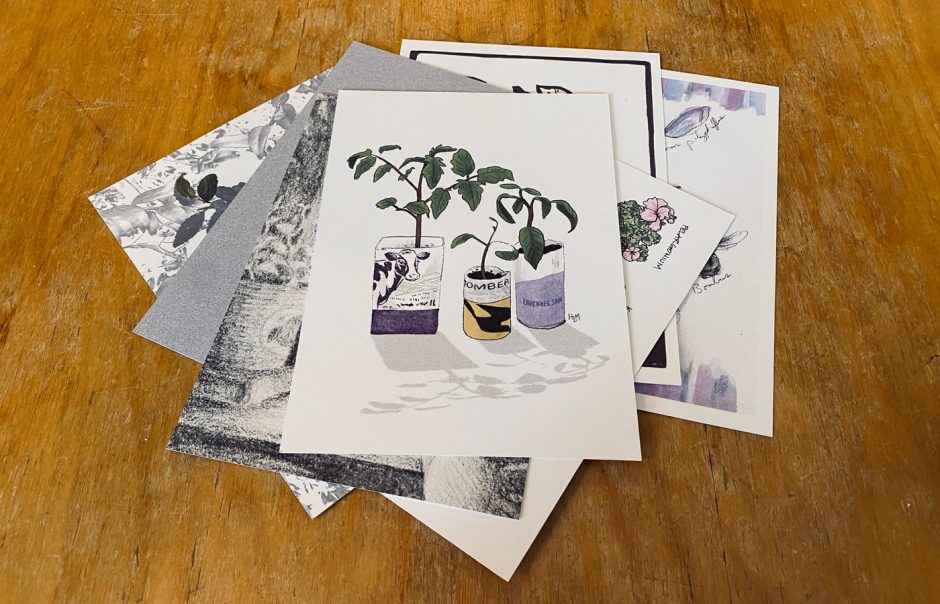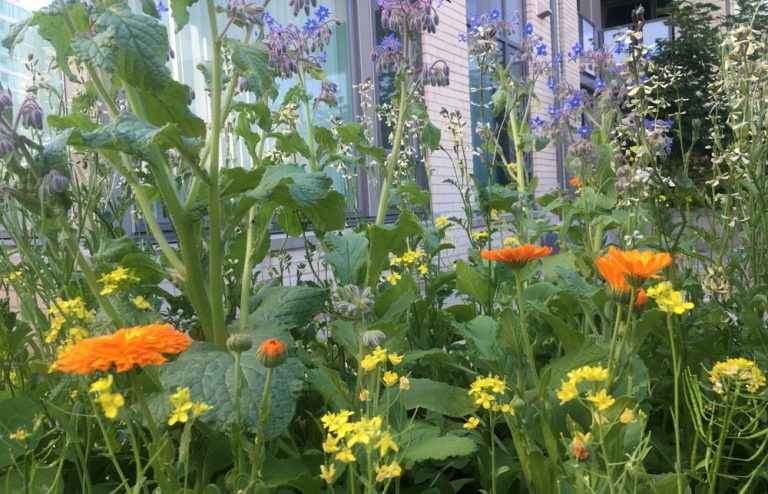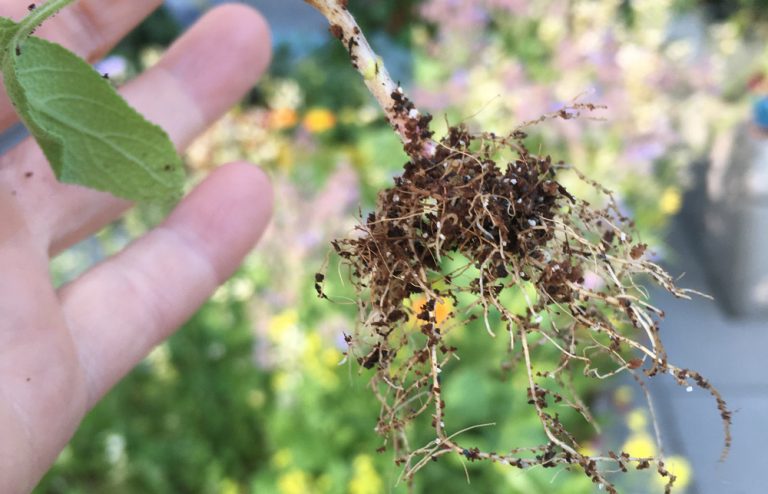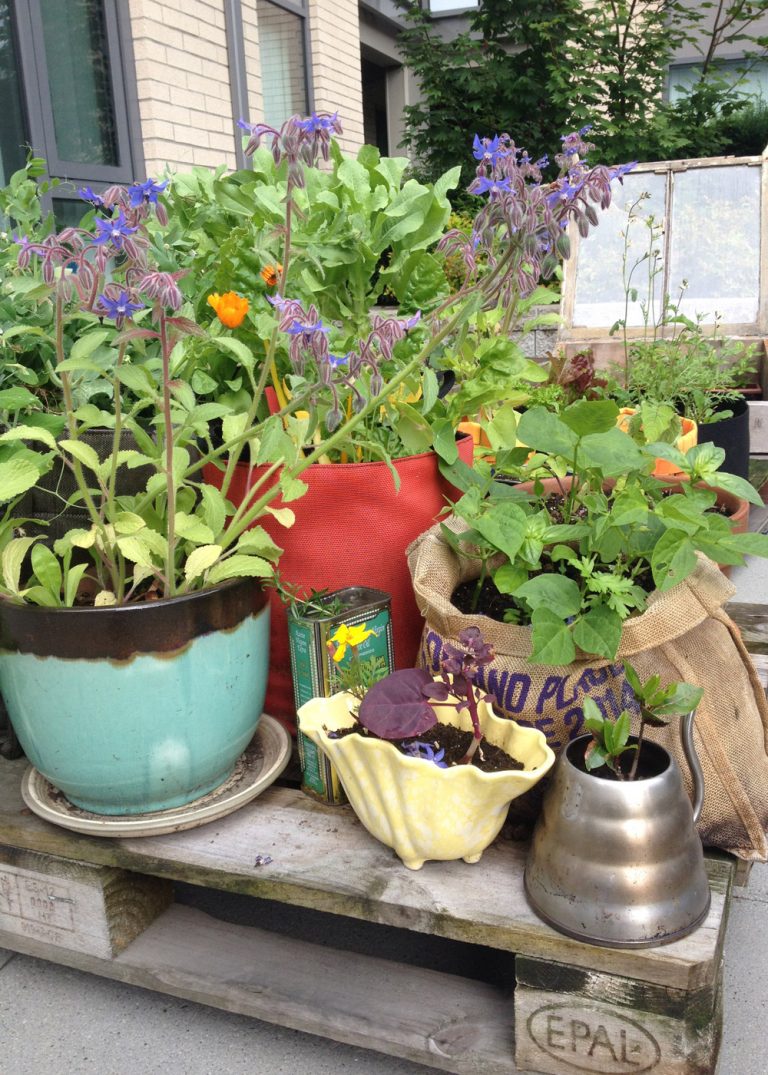Grow Plants, Change your Life is a series of postcards exploring the beauty of plant propagation by amateur gardeners. They will be mailed to subscribers once a month for seven months, starting in May 2022. On one side of the postcard is a short text by me, and on the other a work of visual art created in response to the text, contributed by an artist, designer or architect with whom I have been fortunate to interact during my artistic residency at UBC Botanical Garden. The texts are excerpted from a longer work documenting my year-long exploration of propagation as an everyday rather than expert horticultural practice—the kind of thing that does not have to be done perfectly or on a large scale in order to make a difference. As I wrote in notes I made at the beginning of that year, “being busy, or feeling broken, should not prevent us from doing something good for the world.” Below I provide more information about the postcards, and the year of propagating that inspired them.
The Propagation Postcards

A sneek peek at some of the artwork featured in the postcard series, now on sale
Propagating plants, whether from seed or through asexual methods such as divisions and cuttings, is a way for gardeners to reduce both their costs, and plastic waste (since you don’t have to buy plants in disposable plastic containers). It is also a way to introduce principles of reciprocity and circularity into your gardening practice, develop a deeper knowledge of plants and contribute ecological benefits to your surroundings (e.g., forage for birds and pollinators when you let plants flower and go to seed). Perhaps most importantly, and the reason I chose to make it the theme of my residency at the Garden, propagation initiates a learning process that can change how you see, not only plants, but also the world around you.
Grow Plants, Change Your Life distills key moments from my experience of this learning process. Intended to seed the imaginations of home gardeners in Vancouver and beyond, it does so slowly, in a measured fashion, addressing individuals through objects held in the hand rather than viewed on a screen, inviting them to consider their gardens and their gardening practices from a broader, more joyful perspective. Propagation starts with a gift (of seeds or cuttings) and produces an abundance of plants in return. Consequently, the postcards are as much about giving and receiving as they are about gardening. They imagine a world in which gestures of care really do matter—not only because those gestures might add up over time to make a difference in relation to problems like plastic pollution or biodiversity loss, but also because they concretely connect us to the human and non-human others around us.
The contributors to this project acknowledge that it has taken shape on, and benefited in multiple ways from, the lands of the xʷməθkʷəy̓əm (Musqueam), Sḵwx̱wú7mesh (Squamish), and Səlil̓ilw̓ətaʔɬ (Tsleil-Waututh) peoples.
About the Contributors
Holly Schmidt is an artist, curator and educator who moves across disciplinary boundaries to explore human relations with the natural world. She is currently the Artist in Residence with the UBC Outdoor Art program, Morris and Helen Belkin Art Gallery.
Alex Swanson is an illustrator and designer studying at Emily Carr University of Art and Design. His practice is deeply rooted in ecology, solastalgia and place-based learning.
Karen Yurkovich’s artistic practice centers on nature and its relationship to society and culture. Through community-engaged projects, painting, and multi-media installation she elaborates themes to deepen our connection to nature and reconsider our ecological impact.
Hannah Lou Myers is a comic artist, illustrator, decorative artist, cat portraitist, and ceramicist working out of Vancouver, B.C. She finds inspiration in comics, nature and fantasy and is the Editor-in-Chief of Cloudscape Comics.
Regina de Guzman is a designer and founder/owner of Vancouver-based Ringwood Avenue Gardens. She designs gardens that are beautiful and fun—for humans and non-humans alike—while being kind and respectful to the land on which they grow.
Jingzhou Sun is a third year dual degree masters student in landscape architecture and architecture at UBC. He is interested in incorporating living materials in designs and challenging the ways we build and live now.
Lori Weidenhammer is a Vancouver performance-based interdisciplinary artist and educator. She teaches students of all ages about gardening for pollinators and is co-chair of the Native Bee Society of British Columbia.
More About My Year of Propagating Plants
At the beginning of my process, I was very fortunate to be able to speak to several experts at UBC Botanical Garden about propagation. I thank them for sharing their time and insights with me (while also acknowledging that any mistakes I subsequently made were all my own):
- Douglas Justice, head curator
- Linda Layne, head horticulturist, Food Garden
- Ronda Tuyp, head of the FOG’s propagation group
- Egan Davis, former chief instructor, Horticultural Training Program
- Kevin Kubeck, propagator
- Andy Hill, curator, Asian Garden
- Ben Stormes, curator of North American Collections
- Tim Chipchar, horticulturist
Through these conversations, I learned that, in many cases, the technologies and techniques of propagation are relatively simple; it is the layers of care required to make them work that are complex and nuanced. This is in part what first interested me about propagating at home, because I sensed that creativity would be required in order to make it work with limited time and resources. Perhaps the biggest problem to be solved was the acquisition of plant materials. For this I am very grateful to the individuals who generously provided me with seeds, divisions and cuttings so that I could try different methods of propagation.
- Gudrun Hancock
- Lori Reilander
- Jennifer Rogers
- Jeannie Kamins
- Catherine Shapiro
- Ben Stormes
- Regina de Guzman
- Lori Weidenhammer
- Nancy Brignall
I am also grateful to those gardeners who accepted my donations of plants and incorporated them in their community-based garden projects. Learning about those projects enriched my process a great deal.
- Erica Mulder, IG @guerillainvasiveremoval
- Leona Brown, Indigenous Cultural Facilitator
- Alisha Lettman, on behalf of Legacy Growers Collective
- Marie-Pierre Bilodeau, on behalf of Vancouver Urban Food Forest Foundation

Bee-friendly flowers and flowering mesculun greens in Erin's garden
I wanted to explore the most accessible and cost-effective forms of propagation so I stuck to plants and methods that required less in the way of specialized equipment or vigilant attention. Though I already owned some basic tools (e.g., secateurs), the only items I purchased were: coconut coir, sand and perlite to make my propagating medium, and a reference book. Anything else that I required (e.g., propagating cases), I improvised, using items I had around the house or that I salvaged from the recycling bin (e.g., chopsticks, yogurt containers, plastic bags).
Over the course of the year, I grew plants from seed (some of which I had saved myself, others which were purchased or saved by others), as well as from divisions and cuttings.

A successfully-rooted sage cutting with part of Erin's garden-on-wheels in the background
Seeds:
- tomatoes, several varieties
- kale
- beets
- carrots
- swiss chard
- green bush beans
- scarlet runner beans
- orach
- arugula
- mixed mesclun greens
- snap peas
- nasturtiums
- calendula
- bachelor’s button
- zinnias
- Anise hyssop
- wild bergamot, Monarda fistulosa
Cuttings:
- basil
- thyme
- lavender (not successful)
- rosemary
- sage
- mint, several varieties
- rue
- kinnikinnick (not successful)
- Sedum spathufolium
- evergreen huckleberry Vaccinium ovatum (successful on second try)
Divisions or off-shoots:
- lovage
- lemon balm
- stinging nettle
- evening primrose
- sorrel
- wild strawberry
- wild arugula
- trailing blackberry Rubus ursinus
- wild ginger Asarum europaeum
- wild ginger Asarum canadense
- wood sorrel Oxalis oregana

Improvised propagating case (before it was inserted into a plastic bag)
Between March and November of 2021.
I live and garden on the traditional, unceded territory of the Musqueam people. We live in faculty housing on the south end of campus. Our apartment is on the ground floor and we are lucky to have large, south-facing windows. We also have a relatively large patio on which to garden. However, it is surrounded by tall buildings, so almost all of the pots, fabric planters and re-purposed containers in which I grow, are placed on top of pallets to which we have attached heavy-duty casters. In order to get enough sunlight, I push and pull the plants from one spot to another throughout the day. Even the cold-frame, which I used to temporarily house seedlings and cuttings once they had rooted, is on wheels.
My garden is close to UBC Farm and only a block and a half from the forest, so there are a lot of frogs and birds. However, the landscaping around our building is not very diverse or pollinator-friendly, so I have been strongly motivated to cultivate a diverse range of plants and provide forage for birds and pollinators. Every year I add more species and let more plants go to seed.

Part of Erin's mobile patio garden
My main motivation in pursuing these experiments was to identify and creatively interrogate some of the constraints that might normally discourage an apartment-dwelling gardener from propagating his or her own plants. I hoped that writing about my experiences would be inspiring to others, and encourage them to give propagation a try, however, limited their time or resources.
I was also inspired by the realization that certain methods of propagation require something that was never mentioned in any of the manuals I read: friends. I think that traditional practices of propagation have become less common than they used to be, not only because it is now so easy (and pleasurable!) to buy plants, but also because it has become harder to establish relationships of reciprocity with other gardeners: many of us don’t live in the same place for extended periods, or do the same kinds of things as our neighbours; sometimes we don’t even speak the same language. Particularly when you live in temporary housing on a university campus, where public spaces are often tightly controlled, the familiarity and trust that reciprocity normally requires can be hard to come by.
At the same time, gardens themselves can be seen as a form of social media—that is, they mediate, both spatially and conversationally, between people who might not otherwise have much in common. They can literally be the ground where friendship and/or neighbourly relations are cultivated. My year of propagating, and the way it both required and facilitated connections with other gardeners, was a way of testing this out. Can gardening itself help to establish the relations of reciprocity that would make it more circular and ecologically beneficial in its effects?
Of course, things did not go exactly as I hoped, but I did meet some interesting people. I also learned a great deal, though perhaps not what I set out to learn exactly, because my questions changed along the way. The thing about propagating plants, is that while it is often presented as a precision operation involving a close focus on small things, it is also a process of opening to the world, of learning to perceive the multitude of relations in which plants are embedded and to which they contribute. From this perspective, you just can’t know all the things you don’t know, or might learn, ahead of time.
Submitted by Erin Despard, Artist in Residence, UBC Botanical Garden
